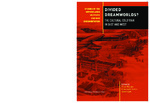Divided Dreamworlds?
The Cultural Cold War in East and West
| dc.contributor.editor | Scott-Smith, Giles | |
| dc.contributor.editor | Segal, Joes | |
| dc.contributor.editor | Romijn, Peter | |
| dc.date.accessioned | 2012-12-31 23:55:55 | |
| dc.date.accessioned | 2019-12-10 14:46:32 | |
| dc.date.accessioned | 2020-04-01T15:17:58Z | |
| dc.date.available | 2020-04-01T15:17:58Z | |
| dc.date.issued | 2012 | |
| dc.identifier | 425211 | |
| dc.identifier | OCN: 816042019 | en_US |
| dc.identifier.uri | http://library.oapen.org/handle/20.500.12657/34481 | |
| dc.description.abstract | While the divide between capitalism and communism, embodied in the image of the Iron Curtain, seemed to be as wide and definitive as any cultural rift, Giles Scott-Smith, Joes Segal, and Peter Romijn have compiled a selection of essays on how culture contributed to the blurring of ideological boundaries between the East and the West. This important and diverse volume presents fascinating insights into the tensions, rivalries, and occasional cooperation between the two blocs, with essays that represent the cutting edge of Cold War Studies and analyze aesthetic preferences and cultural phenomena as various as interior design in East and West Germany; the Soviet stance on genetics; US cultural diplomacy during and after the Cold War; and the role of popular music as the universal cultural ambassador. An illuminating and wide-ranging survey of interrelated collective dreams from both sides of the Iron Curtain, Divided Dreamworlds? has a place on the bookshelf of any modern historian. | |
| dc.language | English | |
| dc.relation.ispartofseries | Studies of the Netherlands Institute for War Documentation | |
| dc.subject.classification | thema EDItEUR::N History and Archaeology::NH History | en_US |
| dc.subject.classification | thema EDItEUR::N History and Archaeology::NH History::NHD European history | en_US |
| dc.subject.other | geschiedenis | |
| dc.subject.other | history | |
| dc.subject.other | geography | |
| dc.subject.other | and auxiliary disciplines | |
| dc.subject.other | Cold War | |
| dc.subject.other | East Germany | |
| dc.subject.other | NIOD Institute for War | |
| dc.subject.other | Holocaust and Genocide Studies | |
| dc.subject.other | Soviet Union | |
| dc.subject.other | United States | |
| dc.subject.other | Yugoslavia | |
| dc.title | Divided Dreamworlds? | |
| dc.title.alternative | The Cultural Cold War in East and West | |
| dc.type | book | |
| oapen.abstract.otherlanguage | Hoe heeft cultuur bijgedragen aan het wegvallen van ideologische grenzen tussen Oost en West? De auteurs analyseren onder meer het interieurontwerp in Oost- en West-Duitsland, de Russische visie op genetica, de Amerikaanse culturele diplomatie tijdens en na de Koude Oorlog en de rol van popmuziek. Deze vernieuwende studie legt enkele opvallende paradoxen bloot met betrekking tot de productie en de beleving van cultuur in Oost en West en biedt fascinerende inkijkjes in de spanningen, rivaliteit en schaarse momenten van samenwerking tussen de twee machtsblokken. | |
| oapen.identifier.doi | 10.26530/OAPEN_425211 | |
| oapen.relation.isPublishedBy | dd3d1a33-0ac2-4cfe-a101-355ae1bd857a | |
| oapen.series.number | 5 | |
| oapen.pages | 248 | |
| oapen.remark.public | Relevant Wikipedia pages: Cold War - https://en.wikipedia.org/wiki/Cold_War; East Germany - https://en.wikipedia.org/wiki/East_Germany; NIOD Institute for War, Holocaust and Genocide Studies - https://en.wikipedia.org/wiki/NIOD_Institute_for_War,_Holocaust_and_Genocide_Studies; Soviet Union - https://en.wikipedia.org/wiki/Soviet_Union; United States - https://en.wikipedia.org/wiki/United_States; Yugoslavia - https://en.wikipedia.org/wiki/Yugoslavia | |
| oapen.identifier.ocn | 816042019 |

